
CERTIFIED SOUL NUTRITION NISSAN 5782 WISHING YOU A HAPPY PESACH! ד”סב ב”פשת ןסינ חספ ןכעליירפ ןוא רשכ א
Dear Reader,
We are now well into the shmitta year and it’s the perfect time to reflect on the spiritual side of shmitta, a time when we take a break from the daily grind and chaos and strengthen our emunah and bitachon in Hashem.
High kosher standards and the Yom Tov of Pesach seem to go hand in hand. Kosher agencies are busy certifying as many products as possible (for year-round and for Pesach); after all, there is a perception that the greater the number of products an agency certifies the greater the agency.
The truth is, the strength of a certifying agency goes much deeper. For example: Is the company set up in the most mehudar way? Or, do they rely on leniencies just to ensure that they close another account? How do they handle the inevitable issues that come up? Are they swept under the rug, or are they completely transparent? Is their allegiance to their manufacturers or to the kosher consumer?
These are the just some of the challenges and responsibilities of maintaining a high-level kashrus organization.
At the ~, we strive for kosher without compromise, and our primary allegiance is to Halacha and the kosher consumer. After all is said and done, in the World to Come our merits will not be based on how many companies we certified. What will count to our credit are the companies we turned down because they could not commit to our required kosher standards.
I once heard that the Maggid of Mezeritch advised some of his students to go observe the way a certain “simple” Jew performed his Seder on Pesach night. The students traveled to a distant, small town in Russia and spent the Seder with this simple Jew. When he came to the words, “Tam ma hu omer…” he began to cry profusely. The surprised students asked the simple Jew why he was crying. He answered: “Tam [which in Russian means ‘there’]. Tam in the World to Come, in heaven, ma hu omer what is He [Hashem] saying about me?”
At the ~, we are constantly asking ourselves a similar question. “What is Hashem saying (in the Heavens) about the decisions we are making here down below?”
Wishing you and your family a chag kosher v’sameach.
Rabbi Chaim Fogelman Editor in Chief, ~ Executive Kashrus Vaad



their legacy.
RABBI BEREL LEVY OB"M and RABBI DON YOEL LEVY OB"M, who set the standards of kashrus at ~ Kosher Certification and who inspire us daily to perpetuate and uphold
is dedicated to
KOSHER SPIRIT Pesach 5782 EDITOR-IN-CHIEF: Rabbi Chaim Fogelman EDITOR:Dina Fraenkel DESIGN: Spotlight Design We welcome your comments, submissions and letters to the editor. Mail: 391 Troy Avenue, Brooklyn, NY 11213 Email: editor@kosherspirit.com © 2022. No portion of this publication may be reprinted without written consent from the publisher. 3 REMEMBERING OUR FOUNDING LEADERS 4 THE PESACH SEDER AND THE FOUR CUPS OF WINE By Rabbi Shlomo Weinfeld 6 HEALTHY SPIRIT Spring Cleaning 7 PESACH RECIPE: TUNA CRUDO By Kim Kushner 8 LAYER BY LAYER: PART 2 BEHIND THE SCENES OF CABBAGE INSPECTION by Rabbi Benzion Chanowitz 10 WHAT’S THE BROCHA? By Rabbi Sholom Ber Lepkivker 11 TRAVELING WITH RABBI DON YOEL LEVY OB”M by Rabbi Kalman Weinfeld 14 AN OUNCE OF PREVENTION By Rabbi Don Yoel Levy OB"M 17 A CLOSER LOOK: TREE NUTS By Rabbi Sholom Ber Hendel 18 HOW CHANGES TO THE SUPPLY CHAIN AFFECT KOSHER CERTICIATION By Rabbi Yitzchak Hanoka 22 CHASSIDIC INSIGHTS: Season Of Our Freedom 23 SOUL NUTRITION by Rabbi Chaim Fogelman
photo credit: Marko Dashev
What’s the Brocha? rice
REMEMBERING OUR FOUNDING LEADERS
By Rabbi Sholom Ber Lepkivker ~ Rabbinic Coordinator



ice is the seed of a grass species called “oryza”, which has many varieties. It is a staple food for half of the global human population, especially in Asia and Africa. Rice was initially cultivated in China and India, and later spread to the Middle East, Europe and Africa.
Rice is mentioned by Chazal in the Mishnah and Gemara under the name “זרוא” and is halachically similar to bread since it is a “satisfying” food. Therefore, the brocha on cooked rice should be borei minei mezonos. The brocha of mezonos even applies to foods baked with rice flour 1

If the rice is not fully cooked, it is best to say shehakol 2
The Shulchan Oruch HaRav brings down3 an argument regarding the exact definition of rice and millet. He explains that some are of the opinion4 that the “זרוא” mentioned by Chazal refers to millet and not what we know today to be rice. Though the common halachic position is that זרוא is rice, the Shulchan Oruch HaRav’s solution is to eat fully cooked or baked rice only during a meal where one eats bread, so that one can avoid saying a blessing on the rice altogether, or to say shehakol. A significant portion of the Chassidic world abides by the ruling of the Shulchan Oruch HaRav.5
It is our utmost honor and privilege to uphold the standards and mission set forth by Rabbi Berel Levy OB”M and continued by his son Rabbi Don Yoel Levy OB”M. They were dedicated to high level kosher supervision, no matter the personal cost, and embodied the mission to spread the wellsprings of Torah to the distant corners of the earth [as Moshiach instructed the Baal Shem Tov] through the certification of kosher food.
The ~ , led by the Executive Kashrus Vaad, and our dedicated Rabbinic Coordinators, mashgichim in the field, and our entire staff, are committed to providing kosher consumers and our clients with kosher without compromise and it is our fervent wish that our efforts elevate their neshamos and help bring about the Geulah Shleimah.
Other poskim (like the Oruch HaShulchon6) disagree and say that today we know that “זרוא” means rice, not millet, and therefore the brocha should be mezonos
According to all opinions, the brocha acharonah should be borei nefashos.
www.KosherSpirit.com 3
1 See הכלה א”פ ברה ךורא ןחלושל ןינהנה תוכרב רדס 2 םש 3 א”י ’ס םש 4 For example י”שר. 5 A םידיסח גהנמ is to say a brocha on three other items. One for each of the brochos of המדאה ,תונוזמ and לכהש and only then to eat the rice product. 6 אכ ףיעס חר ןמיס
www.KosherSpirit.com 3
RRABBI BEREL LEVY ל"ז ז"משת ןסינ 'ה
RABBI DON YOEL LEVY ל"ז ע"שת ןסינ 'בכ ,חספ לש ןורחא
Seder and the 4 cups of Wine

esach is called Z’man Cheruseinu (Time of our Freedom) in honor of our redemption from slavery in Mitzrayim and our rebirth as B’nei Yisroel. One of the most significant customs at the Pesach Seder is the four cups of wine, consumed by men, women and children, representing the four words of redemption that were said in ParV’hotzeiti (I will take you out), V’hitzalti (I will save (I will redeem you), and V’lakachti (I will take you). The four cups of wine are drunk while reciting praises for and reclining towards the left side, a symbol of freedom and luxury, to remind us of the miraculous Exodus from Mitzrayim.

Many have the minhag to drink red wine during the Pesach Seder to remind us of the blood of the Jewish children who were murdered by Pharaoh during the years of enslavement, but during times
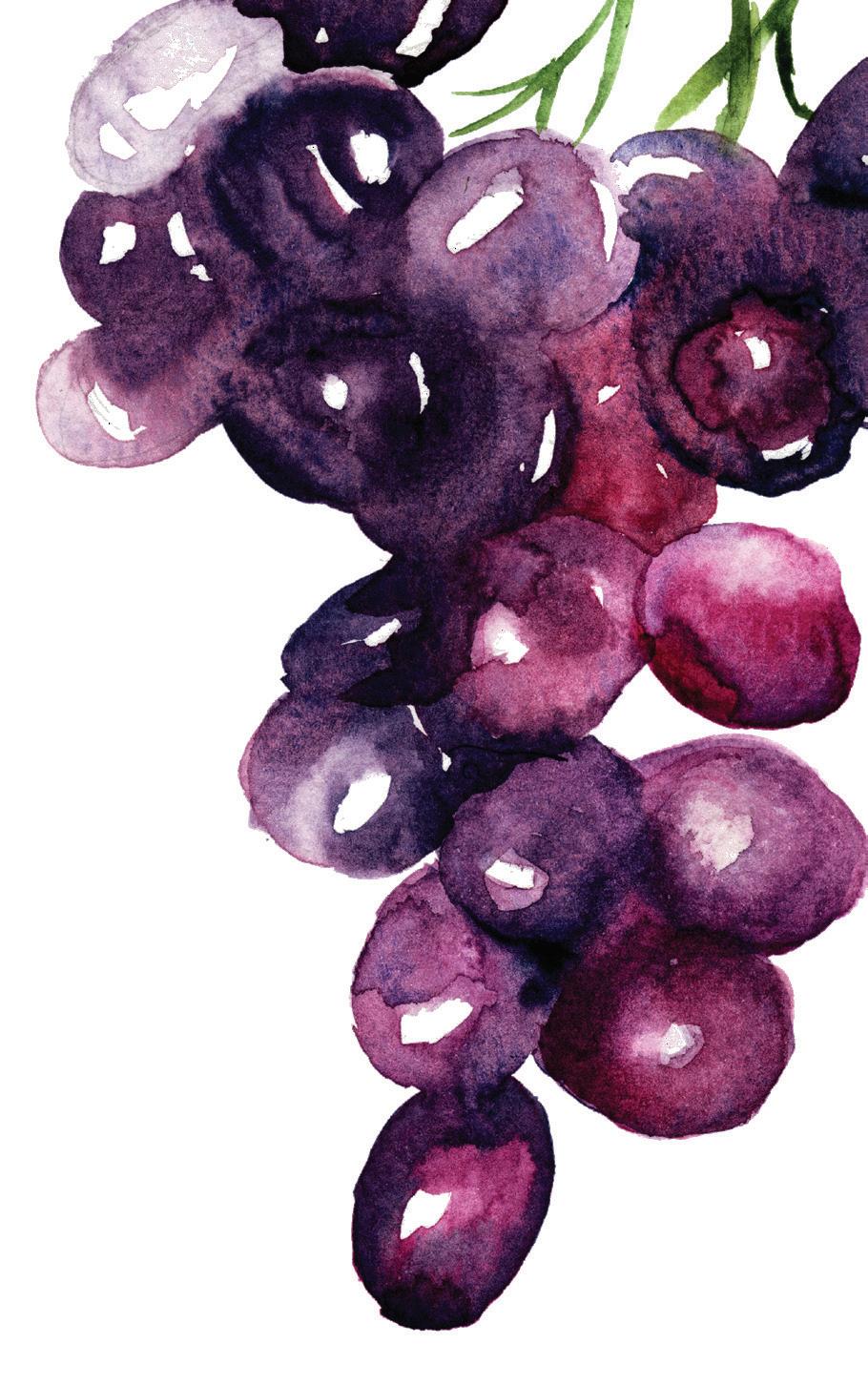
4 www.OK.org
1. Gemara, Tosafos, Pesachim 106.
RABBI SHLOMO WEINFELD ~ Executive Kashrus Vaad
of blood libels where Jews were accused of using the blood of non-Jewish children in the matzah and wine, the custom of using red wine at the Seder was not ob-
On the Seder night we have the custom to invite guests to join our Seder, in fulfillment of the words of Kol dichfin yeisei v’yeichol. Let all who are hungry come and eat.” Sometimes the guests are not Torah observant, and other times there are non-Jewish staff present, either waiters, housekeepers, attendants for the elderly, etc. Due to the special status of wine in Halacha, the kosher status involves a lot more than just kosher ingredients and kosher production equipment. Wine, even when produced by a frum Jew under mehadrin kosher supervision, can only be touched by a frum Jew in order to retain its kosher status, unless the wine (or grape juice) is mevushal (cooked)2. When non-Jewish or non-observant guests are present, it is best to use mevushal wine.
Why is uncooked wine that is touched by a non-Jew or non-observant Jew, prohibited? The main reason is avodah zara), and a secondary reason is to prevent assimilation and intermarriage, so why does cooking the wine help?
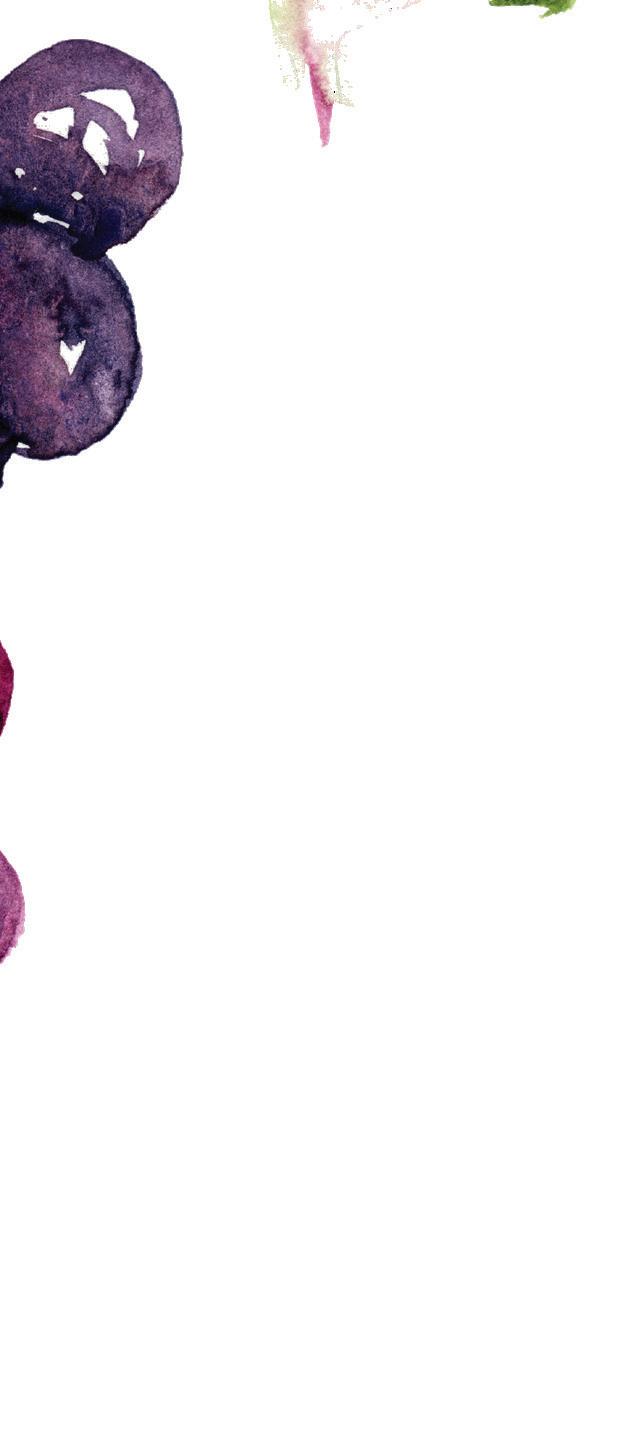

The Rosh explains that cooked wine was very uncommon so it was not prohibited. The Rambam, however, gave a different reason. He said that only uncooked wine could be offered at the Bais HaMikdash and only uncooked wine was offered to idols by nonJews, so cooked wine was not prohibited because it could not be used for sacrifices or idol worship. There is another opinion that cooked wine cannot become prohibited because the taste changes when it is cooked and it cannot be aged for prolonged amounts of time.
Those that hold by an opinion that cooked wine has a different taste from uncooked wine may also adhere to a minority opinion that cooked wine cannot be used for kiddush and actually requires the brocha of shehakol4! Those who abide by this opinion do not use mevushal wine for the Seder and will pour the wine for their guests to avoid anyone touching the bottle.
If a non-observant Jew, generally considered a tinok shenishba (one who was never taught), touches his own glass of uncooked wine, he is permitted to drink the wine, especially at the Seder which is a mitzvah to observe and might lead him towards teshuvah.
There is an additional stringency, as brought down by the Shelah in the name of Taamei HaMitzvos, that some people are stringent not to drink wine that has been seen by a non-Jew, even though the wine was not actually touched by a non-Jew, because the non-Jew saw
the wine, or smelled it, and desires it. Since the general thoughts of the non-Jews at that time were directed towards idol wor ship, it became for bidden. The Shelah adds that whoever avoids such wine will merit to have the “aged wine”, referring to the wine when Moshiach comes. Of those who are stringent about this, some are only stringent with wine meant for Kiddush, Havdalah or the Four Cups at the Seder.
Two years ago, on Acharon Shel Pesach, Rabbi Don Yoel Levy OB”M, Kashrus Administrator of ~ Kosher Certification, passed away. He was niftar during the time of Seudas Moshiach, when Chassidism drink four cups of wine to remember and strengthen the belief in the upcoming redemption. Rabbi Levy was dedicated to upholding the highest standards of kashrus around the world. His clarity of mind and Halachic instructions on every subject are dearly missed in the world of kashrus and we are constantly praying and hoping for the fulfillment of the techiyas hameisim the Final Redemption when we will taste the aged wine of Moshiach and the whole Jewish people will return to Yerushalayim.
2. Gemara, Avodah Zara 30.
3. See kosherspirit.com for a lengthy discussion.
4. The reasoning is beyond the scope of this article.
Removing dust, mildew and allergens promotes respiratory health and a strong immune system.
A clean, uncluttered space has a positive effect on daily mood and focus.
SPRING CLEANING
Jewish homes around the world just finished a marathon of cleaning in preparation for Pesach. Although dust is not chometz, many take this time to do a deep Spring cleaning of their entire home. This cleaning spree has some health benefits that you may not realize!
The process of organizing and removing unused and unwanted items from the home can mentally refresh and inspire you and reduce clutterinduced anxiety.
Thorough cleaning of high contact surfaces (like those in the kitchen and bathroom) can help you prevent the spread of viruses and bacteria.
Purging older items from the refrigerator and pantry can help prevent foodborne illnesses.
Reorganizing allows you to put healthy foods front and center and make food prep easier.
Tidying the home and designating storage spaces for items can prevent injuries from falling or tripping over loose items.
6 www.OK.org
TUNA CRUDO
Crudo, Italy’s take on raw fish, is often thinly sliced and dressed with citrus and olive oil. The key is to prepare food with fine ingredients, so you don’t need to do much else to it. In this case, a fresh, high-quality fish amplified with thinly sliced radishes, a little salt and pepper, citrus, and olive oil yield remarkable results.
READY IN 15 MINUTES SERVES 8
INGREDIENTS
2 (8-oz) sushi-grade tuna loin steaks
1/2 tsp kosher salt
Freshly ground black pepper
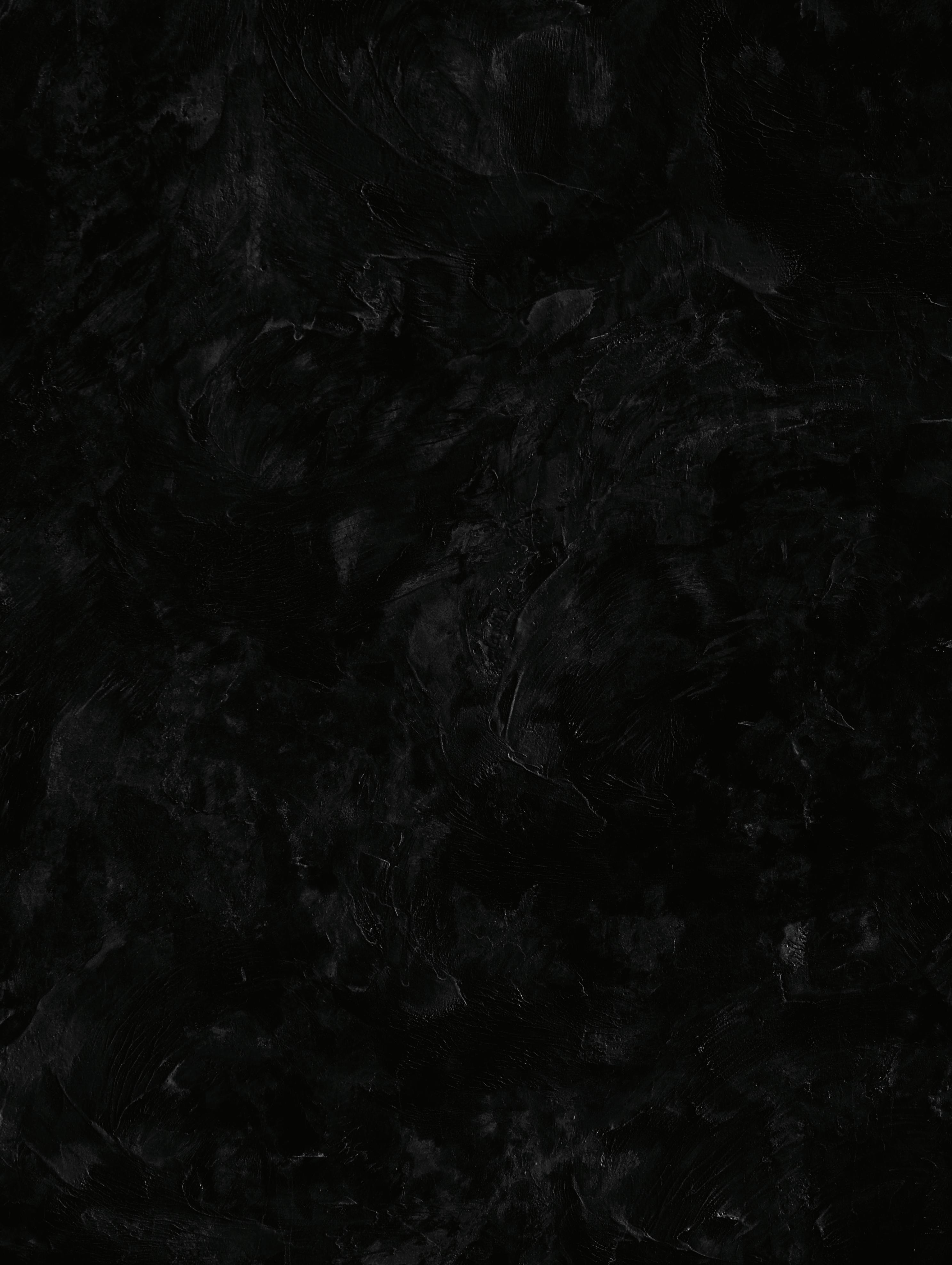
5 radishes, thinly sliced
1 shallot, thinly sliced
Grated zest and juice of 1 orange (about 1/4 cup)
Grated zest and juice of 1 lime (about 2 Tbsp)
3 Tbsp extra-virgin olive oil
Note: Please make sure all ingredients are kosher for Passover.
METHOD
Using a chef’s knife, slice the tuna across the grain into 1/4-inch-thick slices. Season with salt and pepper, then place on a serving platter. Arrange radishes, scatter shallot, and sprinkle the citrus zest on top. In a small bowl, whisk the orange and lime juices and olive oil. Spoon the oil over the tuna and serve immediately.

TIPS
GOOD TO KNOW
Tuna Crudo should be sliced no more than 1 hour before serving.
Tuna Crudo should be dressed just before serving.

If citrus juice is added too early, the fish will “cook” from the acidity in the citrus.
GET ORGANIZED
For uniform crudo slices, place the tuna in the freezer for 10 minutes before slicing.
SUBSTITUTIONS
Tuna Crudo can be made with sushi-grade salmon as well.
www.KosherSpirit.com 7
www.KosherSpirit.com 7 www.KosherSpirit.com 7
Excerpted from The Modern Table: Kosher Recipes for Everyday Gatherings
Copyright © 2022 by Kim Kushner. Excerpted with permission from Figure 1 Publishing. All rights reserved. No part of this excerpt may be reproduced or reprinted without permission in writing from the publisher.
by Kim Kushner. Photography by Kate Sears.
WITH RADISH, CITRUS ZEST, & SHALLOT
Layer by Layer:
Behind the Scenes of Cabbage Inspection
Part 2
By Rabbi Benzion Chanowitz
In the first installment (Chanukah 5782 ) we discussed the basic halachic guidelines regarding insects in produce. In this installment we will take a look at how the ~ inspects a cabbage farm.

~ Kosher certifies a company that uses cabbage during its production. The farmer knows that in order for the ~ to accept his cabbage he must be vigilant in protecting his crop. The farmer checks on his cabbage daily and he also hires a professional scout to look out for the beginnings of infestation. There are times that the scout injects various chemicals in order to repel insects. In addition, there are oils and soaps, as well as herbs and plants, which can repel insects without the use of poison. Even with all of these precautions, the ~ sends me to inspect the cabbage at various points throughout the growing, harvesting and storage process, to ensure the cabbage is clean and free from insects.
During our first visit to the farm, the ~ Tolaim Committee, along with an expert posek who specializes in bedikas tolaim, established a protocol for properly spot-checking the cabbage fields for insects. Based on the requirements set forth in Part 1, we want to establish that this particular field falls under the rule of “Miyut She-Ainoi Motzoi” – that it is extremely rare to find insects in this particular field. Once the protocol has been established, it is the field mashgiach’s job to choose random heads of cabbage and to check them in a makeshift lab.

8 www.OK.org
At the lab, the heads are cut into quarters, each leaf is separated and soaked in a soap solution, and then each leaf is thoroughly rinsed and the water is checked for insects by filtering it through a mesh cloth.
In this case, I use magnifying tools when I inspect the mesh cloth to be sure that there isn’t even the beginnings of insect infestation. Therefore, I am sure to check each speck thoroughly.
WHAT TYPE OF INSECTS CAN THERE BE IN THE CABBAGE?
Cabbage planted for retail sale are usually smaller and grow rather quickly. Cabbage planted for commercial usage are usually larger, heavier, and their leaves are packed more tightly. This is especially true for the winter varieties with very tightly packed leaves that are able to store well at appropriate temperatures in order to be optimal for use during the winter. Winter varieties can take four months or longer to grow, while the other varieties take around 10 weeks to grow.
Generally there are three types of insects that can be found in cabbage: diamondback moths, thrips, and aphids. The moths generally come at the beginning of the season. You can recognize moth damage when you find parts of the cabbage eaten. Pesticides can be applied at the beginning of the season, in order to kill the larvae. Some farmers have developed a system where the pesticide is injected into the ground during their tilling and planting, in order to be more effective.
Natural ways of protecting the crop are rotating (regularly changing the type of produce planted on each field) the crops, being vigilant to find and remove any leaves that have larvae on them, as well as tilling the ground. Some insects are attracted to weeds or cover crops. Tilling breaks up the soil and destroys the weeds and buries the insects and their eggs. Most farmers use pesticides and field management methods, as well as natural predators and repellents (like peppermint, dill or other plants that repel moths from laying eggs), to control insect infestation. Organic farms that do not use pesticides will require more tilling and the usage of natural predators and repellents.
~ Kosher will only permit the use of cabbage from growers who are vigilant in their daily inspections of the cabbage fields and regularly control the insect population.

The particular company referenced in this article has sourced cabbage from multiple farms. The current farmer is very vigilant and produces very clean cabbage; even so, during my last visit I inspected one field where I noticed some tiny brown spots on one of the cabbage leaves. These usually come from thrips. It was decided that this field would not be eligible to be used for kosher production and I selected a different field that did not show signs of infestation for the kosher production.
As the saying goes, at ~ Kosher we strive to provide kosher without compromise. May Hashem continue to give us the siyata dishmaya to achieve our goals.
I hope you enjoyed this article. Please feel free to send your comments and questions to editor@kosherspirit.com.
www.KosherSpirit.com 9
What’s the Brocha?
rice
By Rabbi Sholom Ber Lepkivker ~ Rabbinic Coordinator

Rice is the seed of a grass species called “oryza”, which has many varieties. It is a staple food for half of the global human population, especially in Asia and Africa. Rice was initially cultivated in China and India, and later spread to the Middle East, Europe and Africa.

Rice is mentioned by Chazal in the Mishnah and Gemara under the name “זרוא” and is halachically similar to bread since it is a “satisfying” food. Therefore, the brocha on cooked rice should be borei minei mezonos. The brocha of mezonos even applies to foods baked with rice flour 1
If the rice is not fully cooked, it is best to say shehakol 2
The Shulchan Oruch HaRav brings down3 an argument regarding the exact definition of rice and millet. He explains that some are of the opinion4 that the “זרוא” mentioned by Chazal refers to millet and not what we know today to be rice. Though the common halachic position is that זרוא is rice, the Shulchan Oruch HaRav’s solution is to eat fully cooked or baked rice only during a meal where one eats bread, so that one can avoid saying a blessing on the rice altogether, or to say shehakol. A significant portion of the Chassidic world abides by the ruling of the Shulchan Oruch HaRav.5
Other poskim (like the Oruch HaShulchon6) disagree and say that today we know that “ זרוא” means rice, not millet, and therefore the brocha should be mezonos.
According to all opinions, the brocha acharonah should be borei nefashos.
1 See הכלה א”פ ברה ךורא ןחלושל ןינהנה תוכרב רדס 2 םש 3 א”י ’ס םש 4 For example י”שר 5 A םידיסח גהנמ is to say a brocha on three other items. One for each of the brochos of המדאה ,תונוזמ and לכהש and only then to eat the rice product. 6 אכ ףיעס חר ןמיס
TRAVELING WITH RABBI LEVY














Every serious, erlicher Yid has a schedule of learning, davening, and spiritual avodah to infuse his day with kedushah. Even among serious B’nei Torah, it’s not uncommon to have a more relaxed schedule when one is traveling, when one travels for vacation or business.

Rabbi Don Yoel Levy OB”M traveled often, for weeks at a time, away from his home, his shul, his office. So many average people would do things differently if they were in his situation – maybe wake up a little later, vary their learning schedule, etc. Rabbi Levy did not vary his schedule one iota. How can














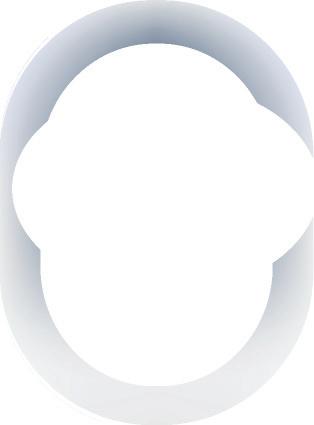

one tell that someone is a real, true person? When he travels and adheres precisely to his schedule of learning, davening, kashrus stringencies, mode of dress, exercise schedule, etc. When nothing changes despite the change in environment, it shows a certain strength of character.





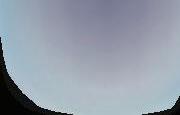
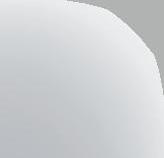
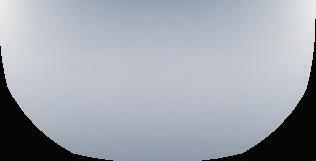

www.KosherSpirit.com 11
OB”M
Rabbi Kalman Weinfeld, ~ Executive Kashrus Vaad
When I accompanied Rabbi Levy on trips, whether to Eretz Yisroel, Canada, Russia or any other place, he never deviated from his schedule. He woke up at the same time, early in the morning, to learn the seder of Torah study that he received from the Lubavitcher Rebbe many years ago, which outlined a robust schedule of learning nigleh and Chassidus, with daily and weekly quotas. Even in very remote locations, if at all possible, he would immerse in a mikvah before davening, and so forth.

to be Rabbi Levy’s grandson.
But mentschlichkeit is not only respect. A few times, I joined Rabbi Levy on trips. Although he was my uncle, when I traveled with him, I was in the capacity of his employee and he was my boss. Rabbi Levy had a custom to daven with the earliest available minyan. I did not always make it to the first minyan, but Rabbi Levy sent me a message each morning after he completed Shacharis to see when I would be ready for breakfast and ask if I wanted him to wait for me.
I will never forget the last trip I took to Moscow with Rabbi Levy a few months before his passing. Rabbi Levy called me early in the morning towards the end of our trip and asked if I wanted to join him on a trip to the city of Lubavitch, because he had never been there. He consulted with his wife about the trip and instructed me to call my wife and seek out her permission as well. Of course, my wife said to go to Lubavitch and asked me to daven for our family there. I was recovering from a broken foot, so Rabbi Levy rented a van with large comfortable seats as he wanted to make sure I would be as comfortable as possible for the long journey.

Sometimes, a person spends a lot of time davening and learning, but they aren’t a mentsch. We all know that “derech eretz kadmah l’Torah”, treating others well comes ahead of learning Torah. Of course, derech eretz is part of Torah – someone who internalizes his learning will naturally treat others with respect! Rabbi Levy took great care to show mentschlichkeit to every person, big or small. When he traveled, Rabbi Levy made sure to greet the local rabbi and defer to him as the leader of the city or congregation, even when the rabbi was young enough
One of the most important qualities for a Rav HaMachshir, a Rabbinic Coordinator, a mashgiach, is a thirst for knowledge, and a depth and breadth of knowledge. Not only about Halacha and kashrus, but a drive to know everything possible about each certified facility. One needs to know the final products, inside and out, the other productions (even non-certified) done in the facility, the possible non-kosher ingredients, what needs to be kashered and how, the production schedule for eino ben yoma kashering, etc.
There are two ways to get this information. The first is to ask the company to provide information, through their application, their ingredient and product submissions, asking questions via email, etc. The downside to this method is that the information might be incomplete. The company representative might not understand the questions, they might inadvertently leave out a piece of information, they might not understand the importance of a detail, or, it’s even possible that they are trying to conceal some information. This is where inspections become crucial. The only way to get the full picture of what is happening at a facility is to visit the facility and see everything for yourself. Rabbi Levy noticed details, and he spoke to employees. He had a system of asking managers, staff members, machine operators, and
12 www.OK.org
"He had a knack for noticing things that others would not see. He picked up on minor changes, because he understood Halacha and he understood the technical side of how machinery works. He asked questions to every type of staff member in the facility, even about the minutest aspects of production"
encouraging them to talk and share everything that came to mind.
This is how you really get to know the ins and outs of the facility. Rabbi Levy had this talent. When he visited a company he saw the full picture in front of him, and he understood even that which was not readily obvious. Whenever Rabbi Levy returned from a facility he wrote a detailed report of his inspection. His reports were clear and methodical so they could be understood by any ~ staff member that needed to access the information in the future. There were no cryptic notes that only he could understand. It was like he planned ahead for when we would need to understand his reports without him physically here to explain them.
When we visited ~ certified facilities together I asked Rabbi Levy to teach me how to conduct a proper inspection. He had a lot of patience and took the time to go over every detail. Once we visited a yogurt company in Toronto, Canada. Rabbi Levy explained the functions of the machinery, the ingredients, down to the smallest details. He had a knack for noticing things that others would not see. He picked up on minor changes, because he understood Halacha and he understood the technical side of how machinery works. He asked questions to every type of staff member in the facility, even about the minutest aspects of production. I learned so much from these trips.
We are coming to the second yahrzeit of Rabbi Levy, on Acharon Shel Pesach. It is a time when we can think about how Rabbi Levy conducted himself and how we can follow in his footsteps and try to emulate even some of what he stood for. It is my hope and goal to approach Rabbi Levy’s level in my private life, in my holy work as the Rav of his shul, Beis Eliezer Yitzchok, and in my role as a member of the ~ Executive Kashrus Vaad. ~




www.KosherSpirit.com 13
Ounce Prevention An of
By Rabbi Don Yoel Levy OB"M
An ounce of prevention is worth a pound of cure. Today, kashrus stories that attract the reader are those describing a sensational bust—how the writer or his agency caught a certified company violating kashrus rules. This shows the cleverness and greatness of the writer or kashrus agency and is quite interesting to read.
However, at the ~, we know that although it is important to be able to catch any wrongdoing on the part of a certified company, we accomplish much more if we set up a system that prevents such problems and ensures that everything runs smoothly. Through years of experience and hard work, supported by a devoted and conscientious staff, the ~ has invested much effort in the “ounce of prevention” theory.
Many companies produce both kosher and non-kosher products. In this situation, many hechsherim just monitor the kosher ingredients and products. By contrast, the ~ has developed an extensive database system which keeps track of all the kosher and non-kosher ingredients used by each company. This system alerts us to any compatible ingredients (i.e. a kosher ingredient that has a non-kosher counterpart, or vice versa), giving us a broader understanding of any potentially problematic situations. The ~ is the only kashrus agency that keeps this type of list and updates it on an ongoing basis.
The ~ also has a unique formula system, which provides complete accountability and transparency for all ingredients used in our database. Each certified company must


Originally printed Pesach 5770 14 www.OK.org
provide a formula (recipe) for every kosher certified product in its facilities. With this information, the ~ can then be sure of every ingredient that enters a product, and ensure that each ingredient is compatible with the product’s kosher status ( pareve , dairy, or meat). This is required of all ~-certified companies, even those with all-kosher facilities.

Two years ago, the son-in-law of a director of a major kashrus agency called me at home with a problem. It was Erev Pesach and there was a product he had thought was ~-P, but it was actually not certified for Passover. I was able to help him solve the issue within fifteen minutes thanks to our kashrus database featuring the latest computer technology.

In 2009, when the Peanut Corporation of America issued a recall of their products due to contamination, the ~ was able to determine exactly which of our certified companies were using the recalled products, and in which products they were being used. (Editor’s Note: See Kosher Spirit Spring 2009, page 27.) Thus, our extensive database is crucial not only for the maintenance of a high kashrus standard, but can also play a valuable role in protecting the health and safety of kosher consumers when a recall is initiated.
The ~ is working intensively on imple menting another preventive measure to en sure that only approved ingredients are used in certified products— the Receiving System. Most kashrus organizations monitor ingre dients by simply giving a certified company an approved list and instructing the company to only use the ingredients found on the list. If the mashgiach finds that the company has purchased an ingredient that is not on the ap proved list, he tells the company to remove the product. This is basically an “after the fact” system—one waits to find something wrong and then has to correct it. This could result in relying on heterim, or even a recall if the ingredient does not meet the proper kashrus standards and has already been used in kosher production. A recall can be very ex pensive and companies are obviously reluc tant to go through this process. Even when a recall is done we cannot be 100% sure that it is complete, and no product is left anywhere on the market. Consequently we would rather
REMEMBERING
DON YOEL LEVY OB"M ה”ע יוויל לאוי ןד ברה פ״שת׳ה ןסינ ב״כ
RABBI
ונורכז הכרבל Kashrus Administrator of ~ Kosher Certification 1987-2020 www.KosherSpirit.com 15
Second Yahrzeit, Acharon Shel Pesach
expend greater effort to prevent the situation from happening in the first place.
The Receiving System developed by the ~ allows us to be proactive in ensuring an additional safety step that only approved ingredients will go into certified products. Certified companies are required to implement this system. The first step in this system is for the R&D (Research and Development), Quality Control, or the ordering department to institute an internal policy that all ingredients must be approved by the ~ before they are purchased. Kosher thus becomes another standard that Quality Control must check for (just like taste, color, price, etc.), and is integrated into the company system.
Once this system is in place, the purchasing department is instructed to add kosher compliance to their contract with their vendors. If an incorrect, unapproved ingredient comes in, or the ingredient arrives without the proper kosher markings, the vendor is responsible to remove and replace the ingredient. Companies obtain ingredients either in package form (bags, boxes or large containers), or in bulk shipments (in trucks, tankers, etc.). Packaged products will carry either a printed kashrus symbol on the label, a hand stamp, or sometimes a written mashgiach’s signature—as required by the agency certifying the product.
Products such as oil or other liquids may come in a tanker, requiring special documentation that attests to the kosher status of the tanker.
The ~ also requires that someone in the receiving area at each facility be responsible to monitor that all incoming ingredients are properly labeled, have proper kosher symbols and that all bulk transport meets the kosher requirements. Furthermore, a list of all received ingredients must be recorded either manually or electronically for the mashgiach to review during his inspection.
At one of the biggest flavor houses in the United States, which is certified kosher by the ~, two mashgichim are present in the facility every day. Due to the complexity of the company and the vast amount of ingredients required for flavor production, Rabbi Favish Moster, one of our most prominent mashgichim, has set up a special computer program that assists in monitoring the raw materials (kosher and non-kosher) that enter the facility. This company uses thousands of different ingredients to produce more than 95,000 flavors… Definitely more information than can be recorded by hand! Rabbi Moster’s system helps guarantee that mistakes will not happen.
At the ~, we much prefer to set up systems that prevent kashrus mishaps, so we can write articles about our kashrus innovations. In the Pesach season, when Jews are known to be extra careful with kashrus , it is my hope that others will take note of our methods and implement preventative measures to protect the integrity of kosher certified products and the consumers that rely on kosher symbols. May our diligence in this matter, and in all matters of Torah and mitzvos, bring about the Geulah immediately and may we celebrate our Pesach Sedarim with Moshiach in Yerushalayim. ~

16 www.OK.org
The Receiving System developed by the ~ allows us to be proactive in ensuring that only approved ingredients will go into certified products.
Tree nuts
WHAT ARE TREE NUTS?
Tree nuts are fruits that grow with a hard shell such as almonds, pecans, pistachios, walnuts, hazelnuts, cashews, and Brazil nuts.
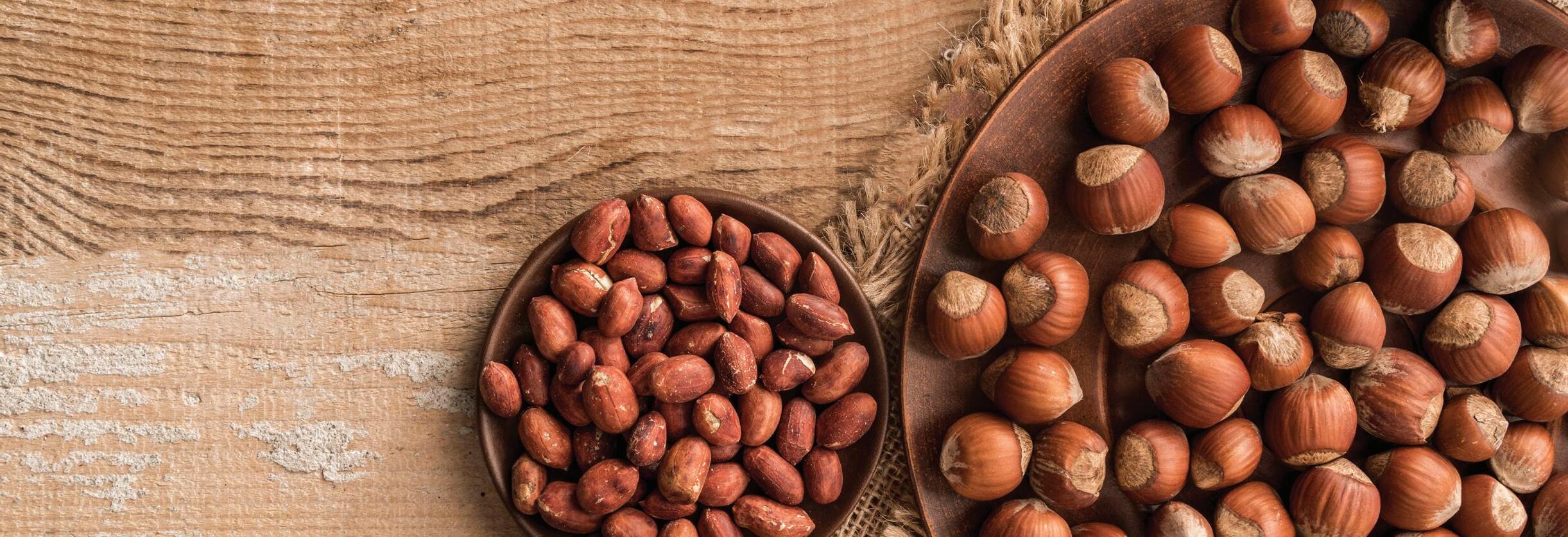
Nuts are enjoyed as healthy snacks, or used as ingredients in many different food products. They are a source of protein, vitamins, essential minerals, and antioxidants. They are also used to produce spreads and oils. The versatile nature of nuts makes them a major part of the Pesach pantry1
HOW ARE TREE NUTS PROCESSED?
First, the nuts are cleaned to remove any foreign objects, then the shells are removed and the kernels are sorted from the shells.
In the past, raw nuts were truly raw, but raw nuts are now processed to ensure that there is no salmonella present. In the US, this is legally required for almonds, but the entire US nut market is slowly shifting in this direction. The treatment can be done with heat (using steam or hot water), with propylene oxide (PPO) fumigation (a chemical process that is losing popularity), or with ethanol, in a new process called Neo-Pure sterilization. The raw nuts are sorted and can be packaged whole, peeled, chopped, diced, or ground into flour and packaged.
Roasted nuts do not need to be pasteurized, because the roasting process kills the bacteria. Nuts can be roasted in one of two methods, an oil roasting process where the nuts are fried in oil, or in a dry roasting process where they go through an oven. In both methods, seasonings or coatings can be applied before or after the roasting process.
ARE TREE NUTS KOSHER?
Raw, untreated nuts do not pose any kashrus concerns when coming from dedicated nut manufacturing facilities. Many simple nut products are processed by repacking facilities that process other products and cross-contamination can be an issue, mostly for Passover, especially when dealing with products that are packed into retail packaging.
The pasteurization process is a potential kashrus concern (especially for Passover) when outsourced to a facility that is not dedicated to kosher production. The new Neo-Pure sterilization process that includes soaking the nuts with ethanol, which is then removed, is a kashrus concern due to the kosher sensitivity of ethanol that can be produced from grapes. Most ethanol in the United States is kitniyos but can also be derived from chometz, which makes this, again, a greater Passover concern. There are reports that the pecans can be soaked in ethanol during the processing and therefore have a similar concern.
Roasted nuts have further kashrus concerns. In addition to verifying the kosher status of the oil for oil roasting, the main concern is that dairy or non-kosher additives can be added before the roasting or immediately after the roasting, while the equipment is still hot (above yad soledes bo). This will cause the equipment to retain the dairy or non-kosher status and affect future production on the same equipment, even if the future product does not contain additives. Roasted nuts should only be purchased with a reliable kosher certification.
There has been much discussion in recent years regarding the production process for cashews. Cashews are roasted in their manufacturing countries by small producers (typically Vietnam, India, or Brazil) to remove the shells and toxins. We are not concerned about the use of non-kosher household equipment for this process since the toxic aspect of the process requires dedicated equipment.
Nuts treated with BHA or BHT as preservatives are not Kosher for Passover due to the corn-based carrier used with the preservatives.
Infestation can be a concern in low-quality nuts and nuts that have passed the expiration date. Consumers are encouraged to check the expiration date and pay close attention to the condition of the nuts that they purchase.
All nuts (including raw) from Israel require kosher supervision to ensure fulfillment of the mitzvos unique to food grown in Eretz Yisroel. ~
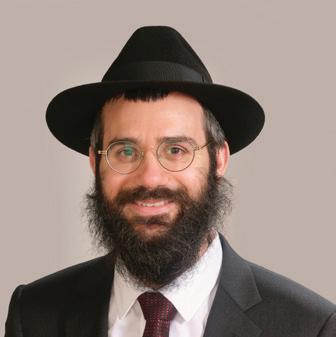
a closer look
Rabbi Sholom Ber Hendel, ~ Executive Kashrus Vaad
1. Contrary to common conception, peanuts are not considered true nuts; they are legumes and there are different opinions if they are considered kitniyos.
www.KosherSpirit.com 17
HOW CHANGES TO THE AFFECT KOSHER CERTIFICATION
By: Rabbi Yitzchak Hanoka, Senior Rabbinic Coordinator
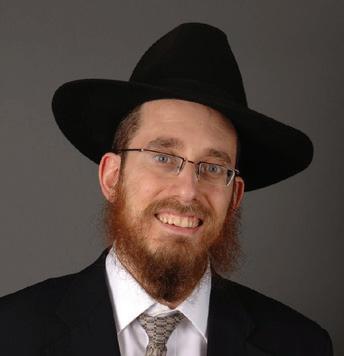
18 www.OK.org
We live in a global economy where raw materials are sourced from all over the world. Food manufacturers are dependent on international suppliers and any changes in the availability of supplies result in supply chain disruption. This ranges from a simple delay in receiving raw materials to a total disruption where the raw materials are completely unavailable. Disruption affects the company’s ability to be able to supply products efficiently and may prompt them to reformulate a product because it is difficult or impossible to obtain the raw materials or in rare cases, it may force the company to discontinue a product.
The art of providing high-level kosher certification is predicated on being attuned to the unique challenges of the food industry and the implications for kashrus. This includes an understanding of both the pertinent aspects of Jewish law and the myriad aspects of food manufacturing, from equipment and packaging to food science and processes. Over the 20 plus years of tutelage I received from my esteemed father-in-law, Rabbi Don Yoel Levy OB”M, I learned the importance of spending time in the field. Rabbi Levy understood that this was the best way to learn the nuances of the industry and I can safely say that I learn most about the industry through my visits to the facilities I oversee. This is the reason that, in addition to the regular unannounced mashgiach visits, all Rabbinic Coordinators at the ~ visit the factories we certify annually.
Through seeing the bigger picture and being well informed, kashrus agencies design a kosher program customized to address the needs of the customer and maintain a high level of kashrus within the confines of Halacha. Part of this is staying ahead of the curve and addressing challenges even before they arise by creating contingency plans. After all, a chain is only as strong as its weakest link, and while kosher certification works best in a climate of stability, we do have to be prepared for shifts in the marketplace and have strong measures in place to counterbalance the ripple effects. Jew -
www.KosherSpirit.com 19 www.KosherSpirit com
"
Part of this is staying ahead of the curve and addressing challenges even before they arise by creating contingency plans. After all, a chain is only as strong as its weakest link.
"
ish Law teaches that one must practice heightened vigilance and awareness in an environment where there is an incentive for changes to occur. Thanks to our preparation and contingency plans the current supply chain crises caused by the COVID-19 pandemic did not come as a surprise to experienced kashrus agencies.
Generally speaking, the current supply chain issues stem from two intertwined factors. The first is that a large amount of the raw materials used to produce food and packaging are sourced from huge manufacturers overseas which were severely shortstaffed due to the pandemic. This led to a shortage of the basic ingredients their customers need to produce end-use products and product packaging. The other major factor is that the shipping companies (both ships and container suppliers), off loaders, and import officials, especially on the West Coast of the United States, experienced staff shortages and shutdowns. The shortage of raw materials and the shipping delays created the perfect storm for large-scale supply change disruption.
When you have supply chain issues it understandably has an impact on kashrus because companies need to change some, many, or all aspects of the way they operate. As a kashrus agency, we need to ascertain what those changes are and ensure they are implemented in congruence with the kosher program in place. Changes might include larger quantities of raw material being stored, longer, shorter, or less frequent production shifts,
different suppliers than usual, changes in packaging, and reformulation of ingredients, which could result in the product changing from pareve to dairy and vice versa, or even from kosher to non-kosher.
INGREDIENTS
Some suppliers will have an easier time providing raw materials due to buying power, geographic location, and proximity to their suppliers. When there is a supply chain disruption, companies will still try to source their ingredients from their usual suppliers but if they can’t, then they will need to look elsewhere, especially since an alternate supplier of an existing ingredient is far more preferable than having to reformulate. From a kosher perspective, the challenge is ensuring that the alternate supplier has an acceptable kosher certification. To make this easier, we encourage our customers to have alternate suppliers preapproved by the ~ in advance to allow for more seamless flexibility.
When an ingredient is not available from a different supplier, a company may have to use a compatible (alternate) ingredient, which may change the status of the product from pareve to dairy or vice versa, or from kosher certified to non-kosher. In such cases, the company may prefer to temporarily stop production rather than have a change in kashrus status.
Some companies are handling the supply disruption by purchasing in different quantities, including switching from packaged to bulk shipments. The kashrus agency needs to be aware of new bulk shipments to ensure the transport itself is properly kosher certified. Some companies are getting larger shipments less frequently, which may require outside warehouse space. The kashrus agency may need to visit the warehouse to ensure all incoming raw materials are properly labeled and in compliance with their kosher letter restrictions.
PACKAGING
The availability of raw materials used to make food packaging has also been affected by COVID-19 and many packaging manufacturers have had to either narrow their product line to bestsellers or packaging made
20 www.OK.org
from material that is more readily available, limit the purchased quantity per customer to keep distribution more equitable, and sometimes a combination of the above.These packaging changes or shortages can force the food companies to adjust their product offerings as well.
LABELS
When consumer products are reformulated, this product label needs to be updated to accurately reflect the new information. This could be as simple as package size, but also complex as a change from pareve to dairy, from kosher certified to non-certified or even non-kosher, and from allergen-free to allergenic. As a kashrus agency, we train our customers to submit artwork for all new and revised labels for review to make sure they accurately reflect the kosher status. Consumers should always look for kosher symbols, but it is especially important during supply chain disruption since the status of some familiar certified products may have changed.
PRODUCTION SHIFTS
Many companies are experiencing staff shortages due to the pandemic and are adjusting their production schedules in myriad ways, including longer, less frequent shifts, or cutting down on the number of production days during the week. Especially in cases where the companies are getting larger quantities of raw material, they may increase their production shifts to ensure that the raw materials are processed as quickly as possible to prevent spoilage. Mashgichim need to be aware of the hours
during which their facilities operate so they can conduct surprise inspection visits at all hours of operation. If companies are open later than usual, mashgichim will include evening and night visits in their inspection plan. No matter the difficulties facing the food industry, our mission as a kashrus agency is to meet the challenges in an efficient, systemic, and kosher-friendly manner. As a rabbi, it is an honor to be part of the kashrus world and to help bring kosher food to consumers all over the world. The Torah teaches us that we are supposed to view times of struggle and challenges as opportunities for personal growth and the development of inner strength. This, in a microcosm, is the concept of Yetzias Mitzrayim – going beyond meytzarim (limitations). Since the times of Yetzias Mitzrayim, the month of Nissan has become a time of Geulah, and it is our fervent wish that we also merit the coming of Moshiach speedily in these days.~
"
The art of providing high-level kosher certification is being attuned to the unique challenges of the food industry and the implications for kashrus. This includes an understanding of both the pertinent aspects of Jewish law and the myriad aspects of food manufacturing, from equipment and packaging to food science and processes.
www.KosherSpirit.com 21
"
Season of our Festival of
FREEDOM AND MATZOS
The festival of Passover is commonly referred to in our prayers as the “Season of our Freedom” [ןמז וניתורח] and the “Festival of Matzos” [תוצמה גח]. These names relate to aspects of Passover that are germane at all times and in all places.

The other names of this holiday — “Passover” [חספ] and the “springtime festival” [ביבאה גח] — apply only to distinct times and places: The name “Passover” is related to the Passover offering, which could be brought only when the Holy Temple stood; “springtime festival” refers only to the Northern Hemisphere, for in the Southern Hemisphere Pesach occurs in the fall.
Understandably, the festival’s message for the entire year1 can best be gleaned from those titles that apply at all times and in all places. The term “Season of our Freedom” alludes to more than just the Jews’ freedom from enslavement in Egypt thousands of years ago: it invokes the true freedom of each and every Jew in all times and places.
The ultimate purpose of the Exodus finds expression in the verse:2 “Upon your taking out the nation from Egypt they shall serve Hashem on this mountain,” i.e., the experience of receiving the Torah at Sinai. For the Jewish people could not be truly free of the physical bondage of Egypt until they were spiritually free as well.3
Spiritual enslavement — the Hebrew word for Egypt being etymologically related to “straits and limitations”4 — can come about from without as well as from within [םילובגו םירצמ]: A person may be enslaved to the mores of his society, or he may be a slave to his own passions. True freedom from this kind of enslavement can be achieved only through Torah and mitzvos — “serving Hashem on this mountain.”
But what specifically is the freedom seeker to do? Herein comes the lesson of the festival’s other name — the “Festival of Matzos.”
1. See Likkutei Torah, Berachah 98b.
2. Shmos 3:12.
3. See Avos 6:2; See also Shmos Rabbah 41:7; Vayikra Rabbah 18:3; Zohar II 113b and onward.
4. See Torah Or, Yisro 71c and onward.
5. Tur and Shulchan Aruch and Shulchan Aruch Admur HaZakein, Orach Chayim 475. [The size of one “olive” in Halachah is 28 grams, or 1 ounce.]
6. Pesachim 30a; Rambam, Hilchos Chametz u’Matzah 1:5; Tur and Shulchan Aruch and Shulchan Aruch Admur HaZakein, Orach
The “Festival of Matzos” consists of two parts: the obligation to eat matzah and the prohibition of eating chametz, leavened products. The obligation to eat matzah is limited to a specific amount at a specified time — a quantity the size of an olive must be eaten on the first night of Passover.5 However, the prohibition against chametz knows different limits; the tiniest particle of chametz is forbidden throughout the holiday.6
The natural differences between chametz and matzah, and the consequent differences between eating matzah and refraining from chametz provide a valuable lesson in the quest for spiritual freedom.7
Leavened dough rises continually. Matzah is the very antithesis thereof — the dough is not permitted to rise at all.

Our Rabbis explain8 that chametz is symbolic of haughtiness and conceit — traits so deleterious that they are at the root of all negative traits. This is one of the reasons why even the minutest amount of chametz is forbidden — haughtiness and conceit must be completely nullified.9
Ridding oneself of the traits represented by chametz and performing the mitzvah of eating matzah enable the Jew to overcome his own faults and the blandishments of the mundane world. He is then able to free himself from spiritual exile, and enjoy this freedom throughout the year. ~
Based on Likkutei Sichos Vol. XXII pp. 266-270.
The content in this page is produced by Chabad.org, and is copyrighted by the author and/or Chabad.org. If you enjoyed this article, we encourage you to distribute it further, provided that you do not revise any part of it, and you include this note, credit the author, and link to www.chabad.org. If you wish to republish this article in a periodical, book, or website, please email permissions@chabad.org.
Chayim beginning of section 447; Shulchan Aruch Admur HaZakein, Orach Chayim beginning of sections 431 and 445.
7. See Likkutei Torah, Tzav first ma’amar titled Sheishes Yamim , ch. 3; Likkutei Torah, Shir HaShirim 14d and onward, et al.
8. See places cited in previous footnote.
9. See Rambam, Hilchos Deos 4:3; commentary of R. Yonah on Avos 4:4.
22 www.OK.org CHASSIDIC INSIGHTS
Based on the teachings of the Lubavitcher Rebbe, Rabbi Menachem M. Schneerson
By Rabbi Chaim Fogelman
The commentaries ask: How can we put the 10 pieces of chometz around the house the night before Pesach and then claim that we are searching for the chometz? Are we not the ones that put the chometz there in the first place? Does it really count as searching when you put it there and know exactly where it is?
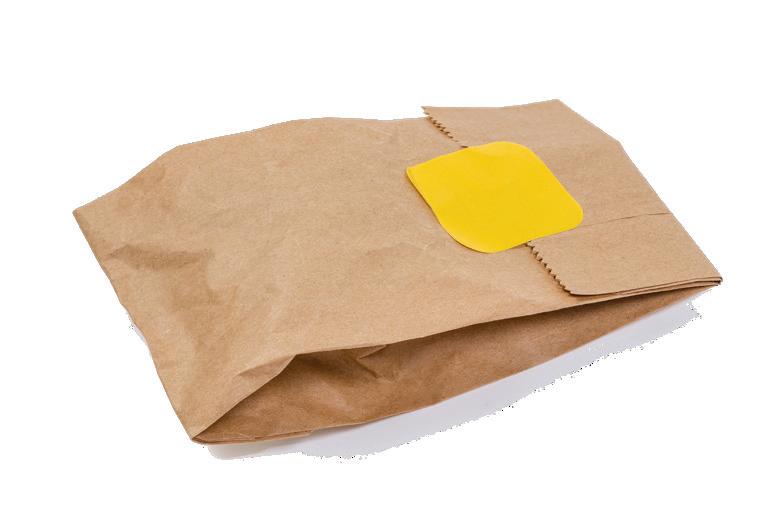



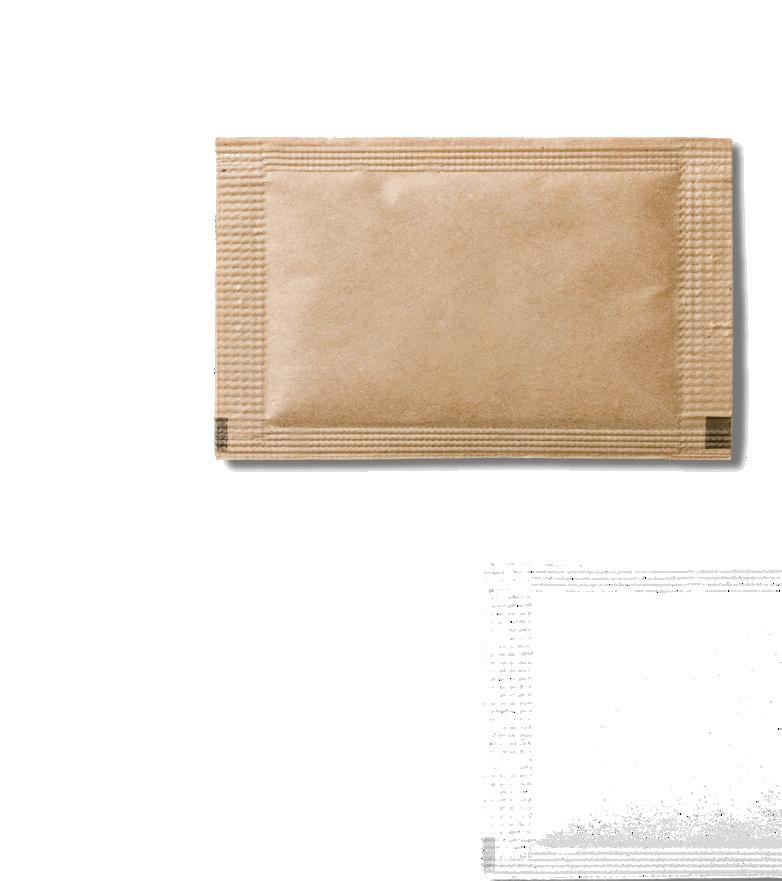




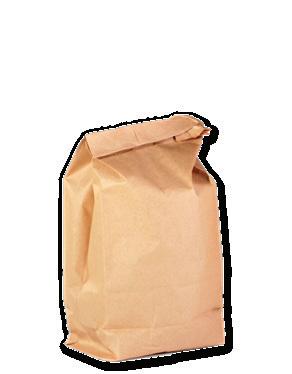

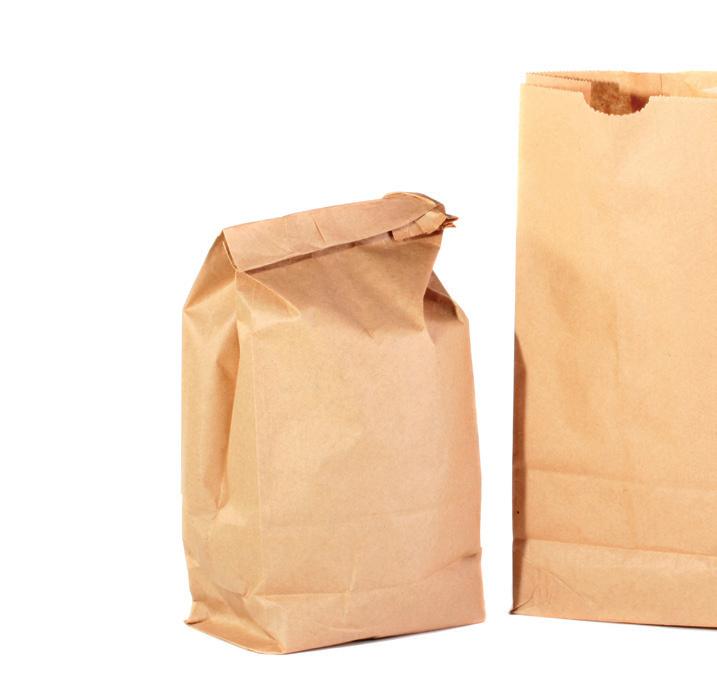

The answer is, yes. It counts; the proof is from the Torah. When Yosef’s servants searched for the golden cup that was put into
Binyomin’s bag, the Torah says they “searched” starting with the oldest brother and continued in birth order. Rashi writes that they knew where the goblet was (after all they put it there), but nevertheless they began “searching” from the oldest (to make it look less obvious). Even though you know where the chometz is, it is still considered searching.
The Pnei Menachem of Gur would also ask Hashem to remove the chometz (Yetzer Hara) within him [and we follow his example], even though Hashem is the one that put it there.
In the sefer Shailos U’teshuvos Min HaShamayim it is written: Be meticulous about the laws of chometz, and all their details, and you will be granted a long life. ~
SOUL NUTRITION
Chometz is compared to the Yetzer Hara because it rises, like haughtiness. That’s why we need to ensure that we get rid of it completely. Even a bit of the Yetzer Hara is not good.
10 5 8 7 9 2 3 1 www.KosherSpirit.com 23 4
Is it Kosher for Pesach?
”Kosher Investigator beautifully captures Rabbi Berel Levy’s remarkable contributions to kosher food – and, more generally, to Judaism. A skilled investigator himself, author Dovid Zakilowski draws on oral interviews, obscure printed sources, and Rabbi Levy’s previously unknown personal papers to provide a revelatory account of his life. Written with great sympathy – and not shying away from controversial topics – this carefully researched book is a page-turner that readers will thoroughly enjoy.”
—Dr. Roger Horowitz author of Kosher USA: How Coke became kosher and other tales of modern food.
”Kosher Investigator pays honor to a founding father of modern industrial kosher certification. Rabbi Berel Levy’s passionate commitment to yiddishkeit and his keen powers of investigation helped transform the American kosher certification system into a model of reliable private regulation. Dovid Zaklikowski’s inspiring account also reveals the love of Torah and Am Yisroel that motivated Rabbi Levy’s many achievements.“
Search“OK Kosher” ontheAppStore& GooglePlaytofind our apps

—Professor Timothy D. Lytton author of Kosher: Private Regulation in the Age of Industrial Food

KOSHER CERTIFICATION ~ Kosher Spirit, 391 Troy Avenue • Brooklyn, NY 11213 718-756-7500 • info@ok.org • www.ok.org Coming Soon November 2017! KOSHER CERTIFICATION ~ Kosher Spirit, 391 Troy Avenue • Brooklyn, NY 11213 718-756-7500 • info@ok.org • www.ok.org
Download the Kosher Food Guide app and get the most updated list of the Kosher for Passover Products that ~ certifies.










































































